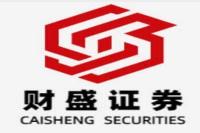Huawei's Silicon-Based Anode Material Patent: A Game Changer for Solid-State Batteries?
Meta Description: Dive deep into Huawei's new silicon-based anode material patent for lithium-ion batteries, its implications for solid-state battery technology, and the impact on key players in the industry. Explore market trends, expert insights, and future predictions. #Huawei #SiliconAnode #SolidStateBattery #LithiumIonBattery #BatteryTechnology
Whoa, hold onto your hats, battery tech enthusiasts! This isn't your grandpappy's lead-acid battery. We're talking about a seismic shift in energy storage, driven by innovation so cutting-edge it's practically science fiction – and it all starts with Huawei's latest patent. Forget everything you think you know about lithium-ion batteries. This isn't just an incremental improvement; this is a potential game changer, poised to revolutionize the entire industry. Imagine electric vehicles (EVs) with unprecedented range, smartphones that last for days on a single charge, and a future powered by cleaner, more efficient energy storage. Sound too good to be true? It's not. Huawei's groundbreaking patent on a silicon-based anode material for lithium-ion batteries is bringing us closer to that reality than ever before. This deep dive will explore the intricacies of this exciting development, examining its potential impact on various sectors, dissecting the competitive landscape, and forecasting the future of energy storage. We'll also cover the key players already making moves in this rapidly evolving space, highlighting their strategies and market positions. Get ready to be amazed – and perhaps even inspired to jump on the bandwagon of this electric revolution. We’ll unravel the complexities, demystify the jargon, and leave you with a clear understanding of why this patent is so significant, and where the industry is heading. Prepare for a mind-blowing ride into the future of energy!
Silicon-Based Anode Materials: The Next Big Thing in Battery Technology?
Huawei's recent patent application focuses on enhancing the performance of silicon-based anode materials for lithium-ion batteries. Why is this such a big deal? Because silicon boasts a theoretical capacity ten times that of graphite, the current industry standard. This means significantly higher energy density – more power packed into a smaller space. Think longer-lasting phones, EVs that can travel hundreds of miles on a single charge, and a whole lot less range anxiety.
However, there's a catch. Silicon expands dramatically during charging and contracting during discharging, a phenomenon known as the "volume expansion effect." This expansion can lead to cracks in the electrode, degrading the battery's performance and lifespan. That's where Huawei's clever innovation comes in. Their patent details a novel method to mitigate these issues, significantly improving the cycle life and overall stability of silicon-based anodes.
Huawei's Patent: Addressing the Silicon Expansion Challenge
The core of Huawei's patent lies in its approach to managing the volume expansion of silicon during charge cycles. Their solution involves creating a composite material with a carefully designed structure that accommodates the expansion of the silicon particles without compromising the integrity of the electrode. This ingenious technique leverages a multi-pronged approach:
- Optimized Particle Size and Morphology: By controlling the size and shape of the silicon particles, Huawei aims to reduce stress concentration during expansion and contraction.
- Conductive Layer Enhancement: A unique conductive layer is introduced to improve electron transfer within the electrode, further enhancing performance.
- Stress Buffering Mechanisms: The design incorporates elements that buffer the stress caused by volume changes, preventing cracking and ensuring longevity.
This isn't just theory. Huawei's patent claims a significant improvement in cycle life, with a dramatic reduction in electrode swelling even after hundreds of charge-discharge cycles. This represents a substantial advancement over existing silicon-based anode technologies.
The Solid-State Battery Connection: A Perfect Synergy
The excitement surrounding Huawei's patent is amplified by its potential synergy with solid-state batteries (SSBs). SSBs are a hot topic in the automotive and electronics industries, promising even greater safety, energy density, and longevity compared to traditional lithium-ion batteries. However, the development of high-performance SSBs faces significant hurdles, including the need for advanced anode materials.
Huawei's silicon-based anode technology addresses this challenge directly. The inherent properties of SSBs, especially their ability to better manage the volume changes of silicon anodes, make them an ideal pairing. This combination could lead to SSB designs with unprecedented performance characteristics, potentially accelerating the widespread adoption of this transformative technology.
Market Impact and Key Players
The potential market implications of Huawei's innovation are enormous. The global lithium-ion battery market is already massive and continues to grow exponentially, driven by the increasing demand for EVs, portable electronics, and grid-scale energy storage. The shift towards higher-energy-density batteries will further fuel this growth.
Several companies are actively investing in silicon-based anode technology:
| Company | Strategy | Status |
|-----------------|------------------------------------------------------|-------------------------------------------------|
| Daoshi Technology | Focusing on Si-C anodes for solid-state batteries | Small-scale production and supply to customers |
| Beijing Lier | Increased Si-C anode production for solid-state batteries | Scaling up production |
| Shanghai SIBAO | Mass production of Si-C anodes and binder materials | Mass production of Si-C anodes and binder materials |
| Others | Many others are investing in R&D and production | Various stages of development |
The race is on. Companies are vying for position in this rapidly expanding market. The successful commercialization of Huawei's technology could significantly alter the competitive landscape.
Challenges and Future Outlook
While Huawei's patent is a significant leap forward, challenges remain. Scaling up production to meet the anticipated demand will require substantial investment and technological advancements. Cost reduction is another critical aspect; while silicon is abundant, processing it into high-performance anode materials requires specialized techniques.
Nevertheless, the future outlook for silicon-based anode materials, especially in conjunction with solid-state batteries, is incredibly promising. As the technology matures and costs decrease, we can expect to see its widespread adoption across various applications. Huawei's patent is a compelling demonstration of the potential, driving further innovation and investment in this exciting field.
Frequently Asked Questions (FAQ)
Q1: What is the significance of Huawei's silicon-based anode patent?
A1: Huawei's patent presents a significant advancement in lithium-ion battery technology by addressing the key challenge of silicon anode expansion during charge cycles. This innovation could lead to batteries with much higher energy density and longer lifespans.
Q2: How does Huawei's technology differ from existing silicon anode solutions?
A2: Huawei's patent focuses on a unique composite material design and manufacturing process to better manage silicon expansion. This leads to improved cycle life and reduced swelling compared to existing solutions.
Q3: What is the connection between Huawei's patent and solid-state batteries?
A3: Huawei's silicon anode technology is particularly well-suited for solid-state batteries. The properties of solid-state electrolytes help mitigate silicon's volume expansion issues, leading to potentially superior battery performance.
Q4: What are the main challenges to commercializing this technology?
A4: Scaling up production to meet market demands and reducing the cost of manufacturing are the main hurdles. Further R&D is also crucial to optimize the technology for various applications.
Q5: Which companies are competing in the silicon anode market?
A5: Several companies, including Daoshi Technology, Beijing Lier, and Shanghai SIBAO, are actively involved in developing and producing silicon anode materials for lithium-ion and solid-state batteries.
Q6: What is the future outlook for silicon-based anode materials?
A6: The future is bright. The growing demand for high-energy-density batteries, coupled with ongoing technological advancements, suggests significant market growth for silicon-based anodes. Huawei's patent is a catalyst for further innovation in this exciting field.
Conclusion
Huawei's silicon-based anode material patent represents a pivotal moment in the evolution of battery technology. It addresses long-standing challenges, paving the way for next-generation lithium-ion and solid-state batteries with significantly improved performance. While challenges remain in scaling production and reducing costs, the potential benefits are undeniable. This innovation could trigger a wave of advancements across various sectors, from electric vehicles to consumer electronics, ultimately shaping a future powered by cleaner, more efficient, and more reliable energy storage solutions. The race is on, and the future of energy is looking brighter than ever. Buckle up – this is going to be one electrifying ride!



